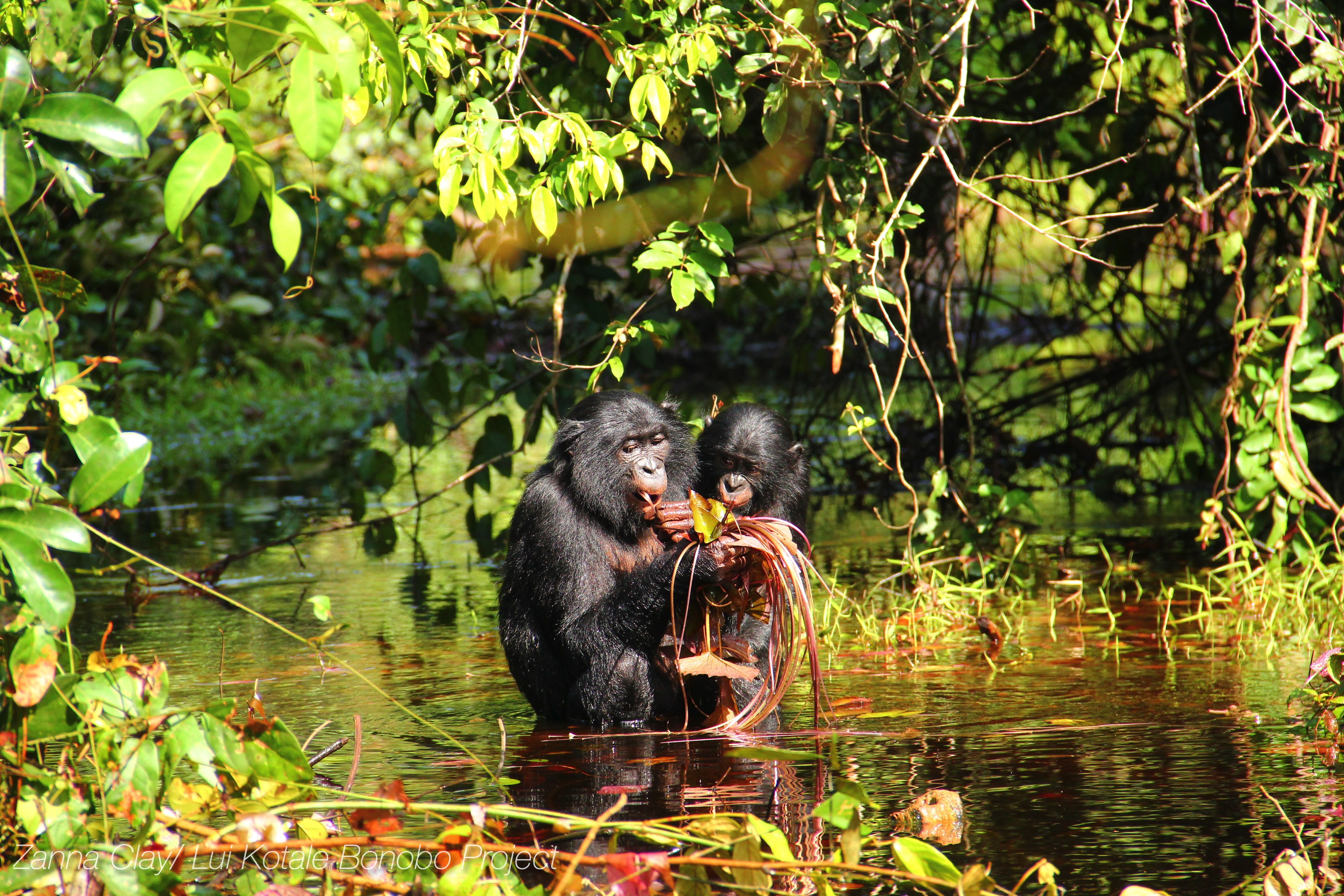Bonobo communication has emerged as a captivating area of study, shedding light on the intricate vocalizations of these remarkable primates. Unlike most other animals, bonobos exhibit a rich repertoire of sounds, using them in ways that suggest a sophisticated form of social interaction. Research has revealed that bonobo vocalizations can form complex combinations, akin to word compounds in human language, indicating a potential evolutionary link between their communication styles and the roots of language evolution. This complexity is not just a reflection of their social bonds but also points to the underlying social complexity of bonobo groups. As scientists delve deeper into animal communication, they uncover the fascinating compositionality within bonobo interactions, raising profound questions about how language itself may have originated.
The communication of bonobos, often described as our closest living relatives, presents a unique insight into how animals express themselves. These primates showcase a distinctive form of vocal interaction that mirrors the structures of human language, hinting at the evolutionary pathways of language development. Observations indicate that bonobo vocalizations function as a sophisticated form of animal communication, involving nuanced combinations and contextual meanings that reveal their social sophistication. Through these vocal exchanges, bonobos manage complex social dynamics, fostering relationships that thrive even at great distances. This intricate tapestry of sounds and meanings exemplifies the potential parallels between bonobo social interactions and human language capabilities.
Understanding Bonobo Communication
Bonobos exhibit remarkable communication abilities that closely mirror human vocalization patterns. Their vocal behaviors include a range of sounds such as whistles, peeps, and yelps, which serve various social functions within their groups. Not only do they vocalize in response to one another, but they also coordinate movements across larger distances, showcasing a sophisticated understanding of their social environment. Their nuanced vocalizations allows them to express different emotions and intentions, suggesting a depth of communication that goes beyond simple sounds.
This unique form of bonobo communication reveals their capacity for what researchers term “compositionality”—the ability to combine sounds to convey complex messages. For instance, the use of specific calls can indicate imminent actions or express emotional states, demonstrating that their vocal patterns are not merely instinctual but rather indicative of a deep social complexity. As researchers delve deeper into bonobo vocalizations, they discover parallels with the evolutionary trajectory of language, implying that our understanding of communication might be far richer when considering our closest animal relatives.
Vocalization Patterns of Bonobos
The study of bonobo vocalizations sheds light on their sophisticated social interactions, emphasizing the role that vocal complexity plays in their social structures. Bonobos utilize a rich array of vocal signals to navigate their complex group dynamics, effectively communicating nuances in social tension and group cohesion. Each vocalization has context-dependent meanings, and specific combinations can signify various social situations, much akin to human language’s ability to create meaning through different phrases.
This intricate vocal repertoire has been analyzed through extensive observational studies, leading researchers to compile a ‘dictionary’ of bonobo calls. Each call is meticulously categorized based on context, illustrating how these primates can convey meaning through combinations of sounds. The evidence collected supports the hypothesis that vocal complexity in bonobos is not just a result of their social structures but also a driving factor that facilitates intricate social interactions, mirroring the formative stages of language evolution.
The Role of Compositionality in Animal Communication
Compositionality is a crucial facet of animal communication, and the findings regarding bonobos highlight its significance in the evolution of language. The concept refers to the ability to combine different signs or sounds to create new meanings. In bonobos, this has been observed in how vocalizations are structured, with researchers noting that complex social interactions could necessitate equally intricate communication forms. This insight suggests that the roots of human language may have deeper evolutionary ties to these behaviors seen in bonobos and other primates.
By exploring the nature of compositionality in bonobos, researchers are uncovering key similarities between their vocal systems and human language. The ability to effectively convey complex ideas through mere vocal sounds is not just indicative of social complexity but also emphasizes the cognitive abilities of these animals. As such, the study of bonobo vocalizations contributes significantly to understanding the evolution of communication across species, potentially reshaping our perspectives on how language itself developed.
Bonobo Social Complexity and Communication
Bonobos are known for their intricate social structures, which are characterized by strong, cooperative relationships among group members. This social complexity necessitates a sophisticated communication system that allows them to engage with one another effectively. Their vocalizations serve as essential tools for maintaining social bonds, coordinating group activities, and alleviating tensions during conflicts. Observations indicate that bonobos can utilize sound not just to express immediate needs, but to navigate and influence dynamic social situations.
As bonobos display increasingly complex social interactions, their communication systems have evolved to meet the demands of their social lives. The research documented emphasizes how vocal communication is pivotal in fostering relationships within bonobo communities. By employing various vocalizations to signal intentions, emotions, or social dynamics, bonobos showcase an advanced level of social intelligence, reinforcing the idea that communication strategies are deeply intertwined with social structures in animal species.
Implications for Language Evolution Studies
The findings related to bonobo communication offer significant implications for studies on language evolution. As researchers draw parallels between bonobo vocalizations and early human language, the understanding of how language may have originated becomes increasingly complex. The similarities in the use of sound combinations highlight a potential evolutionary pathway where vocal complexity paved the way for linguistic development. This recognition that non-human primates share essential communicative traits with humans challenges long-standing beliefs about the uniqueness of human language.
Investigating bonobo vocal behavior provides insights that extend beyond mere primate research; it invites a reevaluation of what defines language and communication in the broader spectrum of life. The study’s conclusions promote an interdisciplinary approach, merging linguistics, anthropology, and primatology to foster a deeper understanding of how communication systems evolve. This knowledge not only enhances our grasp of bonobo society but also enriches the ongoing discourse about the roots and nature of human language.
Learning from Bonobo Vocalizations
Studying bonobo vocalizations offers a unique opportunity to learn about animal communication patterns and their evolutionary significance. By examining the intricacies of their vocal behaviors, researchers can derive insights relevant to understanding how language might have formed in humans. This research emphasizes that vocalization is not merely instinctual behavior but a sophisticated adaptive strategy that facilitates social cohesion among bonobos, thus reinforcing their social ties.
The implications of understanding bonobo vocalizations extend beyond historical linguistics; they provide a compelling framework for conservation efforts as well. Understanding the communication of bonobos can inform how humans interact with and protect their natural habitats. By recognizing the importance of vocalizations in maintaining social structures, conservationists can better appreciate the ecological roles these primates play and ensure their preservation for future generations.
The Significance of Animal Communication Research
Research into animal communication, particularly in bonobos, unveils the remarkable cognitive abilities of these fascinating primates. The ability to communicate complex ideas reveals sophisticated mental processes that were once thought to be exclusive to humans. By analyzing bonobo vocalizations, scientists can better understand not just the ‘how’ but also the ‘why’ behind animal interactions, paving the way for a broader comprehension of animal intelligence.
Moreover, this research underscores the importance of animal vocalizations as a window into the evolutionary past of human language. As we learn more about how bonobos and other animals utilize sound to convey information, we gain valuable insights into the evolutionary pressures that may have shaped human communicative abilities. The focus on vocal complexity—and its correlation with social structure—opens new avenues of research that could further illuminate our understanding of language’s origins.
Bonobo Vocalization as a Model for Language Studies
Bonobo vocalization offers a unique model for understanding the foundations of language, given their close genetic relationship to humans. Their use of complex vocal signals showcases a potential parallel to the early stages of human language development, providing a comparative perspective that could enrich linguistic studies. By examining how bonobos construct meaning through vocal combinations, researchers can gather crucial insights that contribute to theories of language evolution.
In essence, bonobo vocalizations serve as a microcosm for studying the transformation of communication systems over time. By investigating the specific mechanics of bonobo sounds and their meanings, scientists can map out how similar processes may have occurred in early hominins. This research highlights the significance of animal communication as a lens through which we can better understand the emergence of human linguistic capabilities.
Future Directions in Bonobo Communication Research
As research into bonobo communication advances, future studies are likely to expand on the foundational work already established regarding their vocalizations. New methodologies, perhaps integrating technology and artificial intelligence, may enable researchers to uncover even deeper layers of meaning within bonobo sounds. The continued exploration of their vocal repertoire could bring forth revelations that further elucidate the connections between vocal complexity and social dynamics.
Moreover, interdisciplinary collaborations could enhance understanding and spark innovative research directions that extend the boundaries of traditional animal communication studies. Comprehensive studies are essential to deducing the implications not only for understanding bonobo behavior but also for translating these findings to other primate species and human language. Ultimately, bonobo communication research holds the potential to reshape our understanding of language’s evolution and the cognitive capacities of our closest relatives.
Frequently Asked Questions
What role do bonobo vocalizations play in social interactions?
Bonobo vocalizations are crucial for facilitating complex social interactions within their groups. These vocalizations, which include peeps, yelps, and whistles, help bonobos communicate about social dynamics, coordinate movements, and express emotions, indicating their sophisticated social structures.
How do bonobo vocalizations compare to human language evolution?
Research indicates that bonobo vocalizations exhibit features of language evolution similar to humans, particularly in their use of compositionality. This means bonobos can combine different calls to convey complex social information, suggesting that the roots of language may predate human development.
What is compositionality in bonobo communication?
Compositionality in bonobo communication refers to their ability to create new meanings by combining different vocalizations, much like humans do with words and phrases. This capacity allows them to express intricate social situations, demonstrating a sophisticated level of animal communication.
How are bonobos’ social complexity and vocal communication linked?
The connection between bonobo social complexity and vocal communication is evident in how their vocalizations are tailored to maintain social bonds. The study shows that as bonobos engage in varied social interactions, their vocal communication evolves, reflecting their intricate social networks.
What can we learn about animal communication from bonobo vocalizations?
Bonobo vocalizations offer valuable insights into animal communication by revealing how these primates utilize a structured system akin to human language. This research emphasizes the importance of understanding vocal repertoires in animals and their potential similarities to human language structures.
What findings were revealed about bonobo communication in the Kokolopori reserve study?
In the Kokolopori reserve study, researchers discovered that bonobo vocalizations possess unique meanings, supporting the idea that these primates use complex communication strategies. By documenting their vocal behavior, the study created a ‘dictionary’ that highlights compositionality in bonobo communication.
How do bonobo social bonds influence their communication methods?
Bonobo social bonds play a significant role in shaping their communication methods. The complexity of their social structures necessitates an equally complex system of vocalizations, allowing them to navigate social situations, coordinate activities, and maintain relationships within their groups.
Are vocalization studies in bonobos significant for understanding language evolution?
Yes, vocalization studies in bonobos are significant for understanding language evolution as they illustrate that complex communication systems might not be exclusive to humans. Such studies shed light on how social environment and communication methods have co-evolved across species, highlighting shared traits.
| Key Point | Description |
|---|---|
| Vocalizations Similar to Human Language | Bonobos use vocalizations that are structurally and functionally similar to human language, suggesting complex communication capabilities. |
| Compositionality | Bonobos exhibit ‘compositionality’ in their vocalizations, meaning they combine sounds to create new meanings, akin to how humans create phrases. |
| Research Findings | A ‘dictionary’ of bonobo vocalizations has been compiled to understand their meanings and social contexts. |
| Evolutionary Implications | The findings suggest that the roots of language might predate humans, indicating a complex evolution of communication tools in social species. |
Summary
Bonobo communication is a fascinating area of research revealing that these great apes possess vocalization capabilities akin to those of humans. The study of their complex vocal behaviors not only sheds light on their social interactions but also suggests that the foundations of language may have existed long before human evolution. Understanding bonobo communication can provide valuable insights into the development of social structures and relationships within animal communities, emphasizing the significance of vocal complexity in enhancing social bonds.




